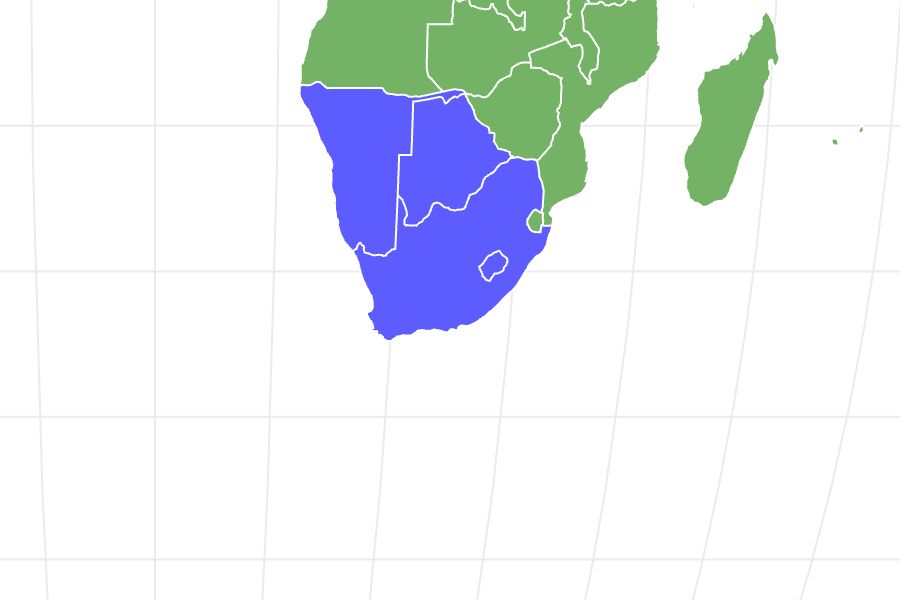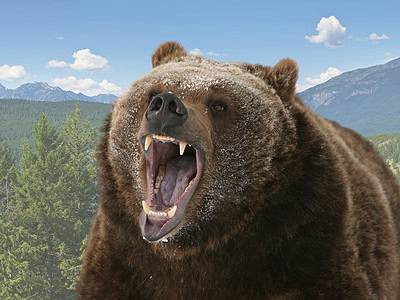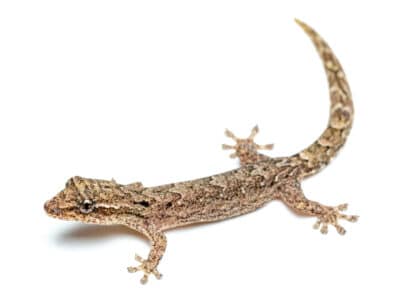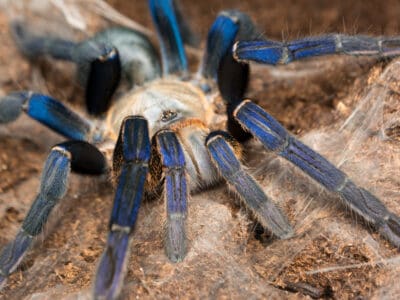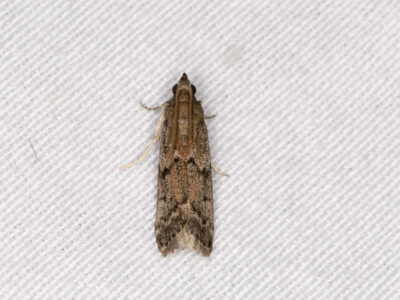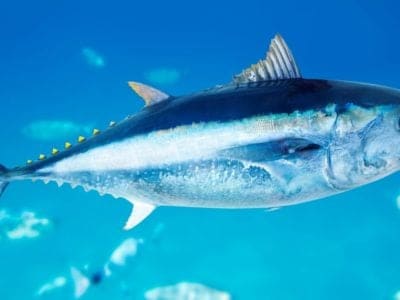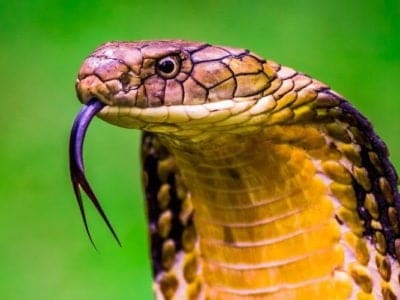Xerus
Xerus use their fluffy tail as shade from the sun on the African savanna.
Advertisement
Xerus Scientific Classification
Read our Complete Guide to Classification of Animals.
Xerus Conservation Status
Xerus Facts
- Prey
- Insects, leaves, seeds, nuts
- Name Of Young
- Pups
- Group Behavior
- Social
- Fun Fact
- Xerus use their fluffy tail as shade from the sun on the African savanna.
- Most Distinctive Feature
- Long white tail
- Gestation Period
- 48 days
- Habitat
- Savannas, grasslands, deserts
- Predators
- Jackals, snakes, lizards
- Diet
- Omnivore
- Average Litter Size
- 1-3
- Lifestyle
- Diurnal
- Common Name
- African ground squirrel
- Number Of Species
- 4
- Location
- Sub-Saharan Africa
- Slogan
- Squirrel that lives in burrows in Africa.
- Group
- Mammal
Xerus Physical Characteristics
- Color
- Brown
- Red
- White
- Skin Type
- Hair
- Lifespan
- Unknown in the wild, 11.5 years-in captivity
- Weight
- 14oz-22oz
- Length
- 17in-18in
- Age of Sexual Maturity
- 8 months
- Age of Weaning
- 52 days
A Xerus uses its fluffy tail as shade from the sunlight in Africa.
The Xerus is commonly known as the African ground squirrel and is native to Africa. These animals are diurnal and mostly herbivorous. They are very social and live in burrows like their cousins the marmots and prairie dogs.
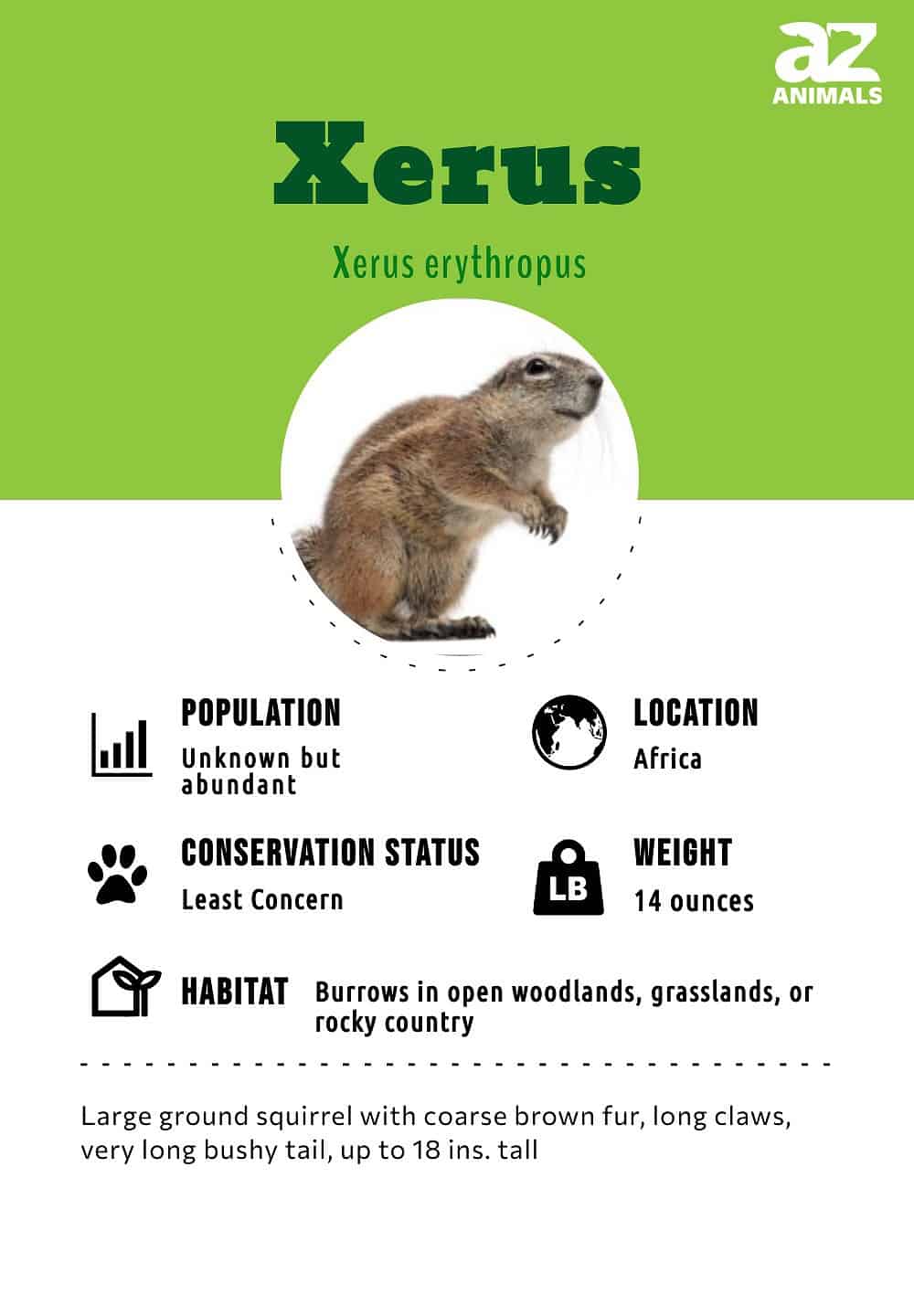
5 Amazing Facts
- Mature male Xerus are animals that like to form their own groups separate from the females. These groups often consist of about 20 members each. The female Xerus live in groups of one to four with their babies, also known as pups.
- These squirrels are not known to hide food like other squirrels. Instead, they go out hunting for food daily and don’t keep steady storage.
- They don’t live in trees, creating more comfortable habitats in burrows in the desert.
- These squirrels mate throughout the year rather than during a single season. The males and females have multiple mating partners.
Scientific Name
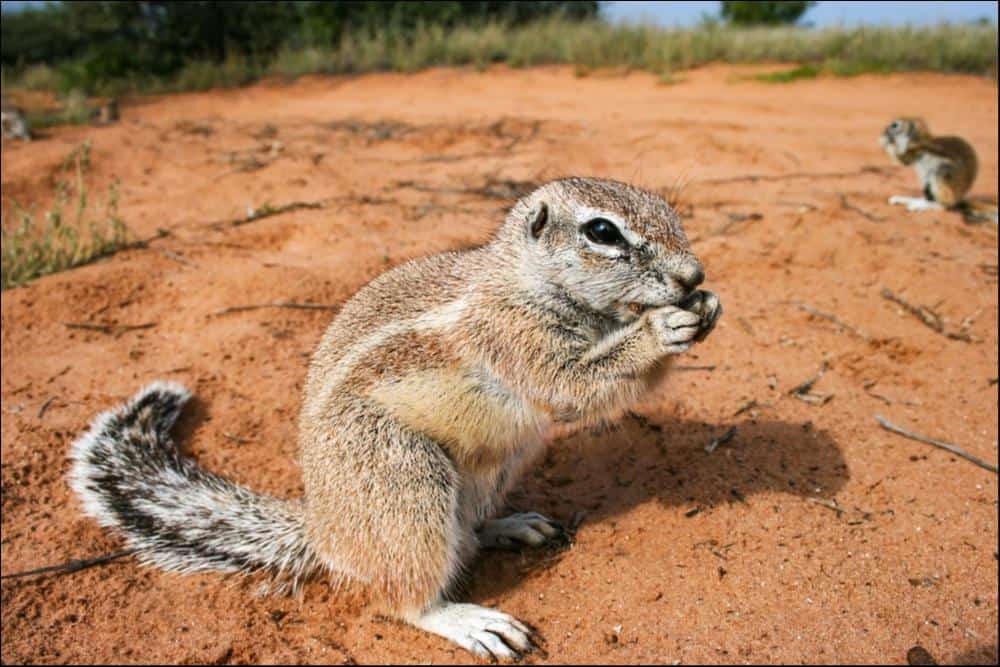
The striped ground
squirrel
of Africa (Xerus erythropus) is perhaps the best known of the genus Xerus, so it is called the African ground squirrel.
©iStock.com/Emmanuel Chansarel-Bourigon
Commonly known as the Xerus (from the Greek word xeros meaning dry), these animals belong to the family Sciuridae and phylum Chordate. They come from the Mammalia animal class. The Xerus comes from the squirrel family Saciuridae, subfamily Xerinae, and tribe Xerini. The genus Xerus has four species:
- Striped or African ground squirrel (Xerus erythropus) found primarily in the southwestern area of Morocco, Mauritania, and Senegal.
- Cape ground squirrel (Xerus inauris), primarily lives in South Africa, Botswana, and Namibia, seeking out drier areas to call home.
- Mountain or Damara ground squirrel (Xerus princeps) lives in the western region of South Africa and Namibia, as well as the southwestern side of Angola.
- Unstriped ground squirrel (Xerus rutilus) can be found in the grasslands, woodlands, and rocky areas of the northeastern areas of both Sudan and Tanzania.
- There is a fifth ground squirrel, the Barbary ground squirrel of northern Africa, but it is from a different genus (Atlantoxerus getulus). There is also a member of the tribe in Central Asia (Xerini Spermophilopsis) called the long-clawed ground squirrel.
Appearance and Behavior
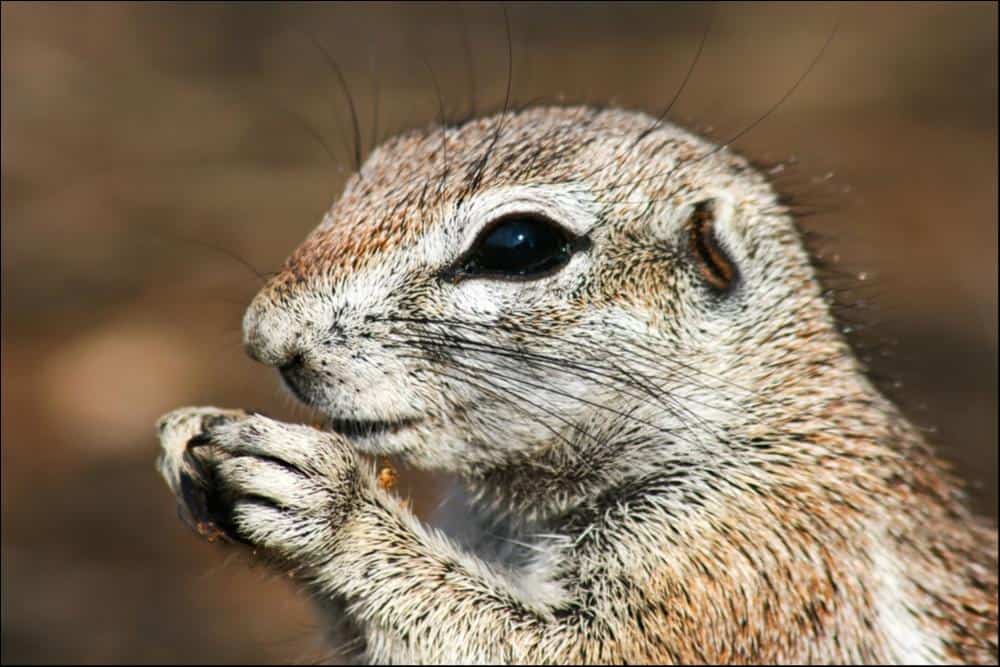
The Xerus ground squirrel has coarse, short fur in brownish tones.
©iStock.com/Emmanuel Chansarel-Bourigon
These squirrels are covered in coarse, short fur from head to toe that is often the light-brownish color of the soil. However, it can also be found in reddish-grey or yellowish-grey fur. Their feet have less hair than the rest of their bodies. While the pads of their feet have minimum to no hair, the foot itself has some. These squirrels can jump a distance of up to 20 feet. They have long, muscular hind legs and short front legs that work together to aid in leaping
In the case of the striped ground squirrel, the body has a white stripe running on both sides and shoulders. The tail is usually flat and is a darker shade than the body fur. The ears of the animal are usually small, and the claws are long and curved. However, these claws do not allow the creature to climb trees.
The squirrel’s height can be anywhere between 17 to 18 inches, excluding the tail. The tail is about 7.5 to 10.2 inches long, making it approximately one-third of the Xerus’ full length. These squirrels use their tails as protection from the scorching heat.
The size of the squirrel mostly depends on the subspecies in question as all four could have some differences. They usually weigh about 14 ounces.
The Xerus is known to be a social animal that lives in groups. Usually, a group consists of 1-3 females and 2 to 3 males Oddly enough, mature males like to form their own larger groups of up to 20 members each. The females, on the other hand, stay in a group of 1-4 along with their offspring.
Habitat
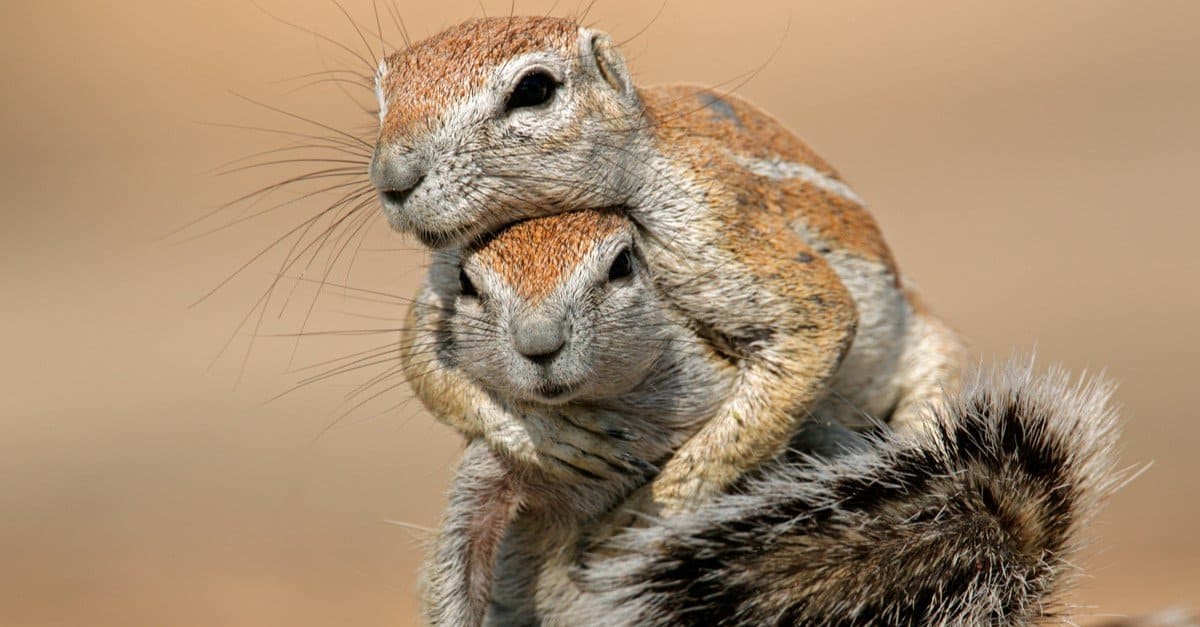
The Cape Ground Squirrel (Xerus inaurus) lives in South Africa. The species may be social, but it does not migrate.
©EcoPrint/Shutterstock.com
The Xerus are known to live in open areas, especially woodland, desert, or grassland. One of the subspecies even makes its home in rocky regions, including the mountains. Although many other squirrels and similar animals are known to live in trees, Xerus make their homes in burrows instead. Although Xerus can be found throughout Africa, the best chance to find some of these animals in the wild would be to check out certain areas of the desert in South Africa, Namibia, Lesotho, and Botswana. The squirrels are not known to migrate, so the odds of seeing one are fairly high.
Diet
Xerus dines on a variety of foods like nuts, roots, and seeds. The cape ground squirrel particularly likes shrubs and bulbs as well. They also will consume yams, cotton, cassava, peanuts, and sweet potatoes when they find them. Though the Xerus is primarily an herbivore, there are several animal-based sources of protein that they will seek out during their diurnal treks for food. When available and needed, their diet will also consist of insects, eggs, and small animals (in small amounts).
Predators, Threats, and Population
Like all the other animals, Xerus also eat and are eaten by other living creatures, holding their own in the food chain. The largest threat to the life of Xerus is the jackal, though the black-backed jackal seeks it out the most. Xerus is also pursued by snakes, lizards, and the puff adder.
Xerus is known to be a fast animal, which is necessary to beat the animals that prey on them. However, it is unclear how quickly that they may move, since their quick sprints are often short-lived.
On another front, the industrial activities that humans carry out also pose a threat to the lives of Xerus as it may lead to the degeneration of their natural habitat.
The Xerus population is unknown but plentiful enough that the IUCN has declared it to be of least concern.
Xerus Reproduction, Babies and Lifespan
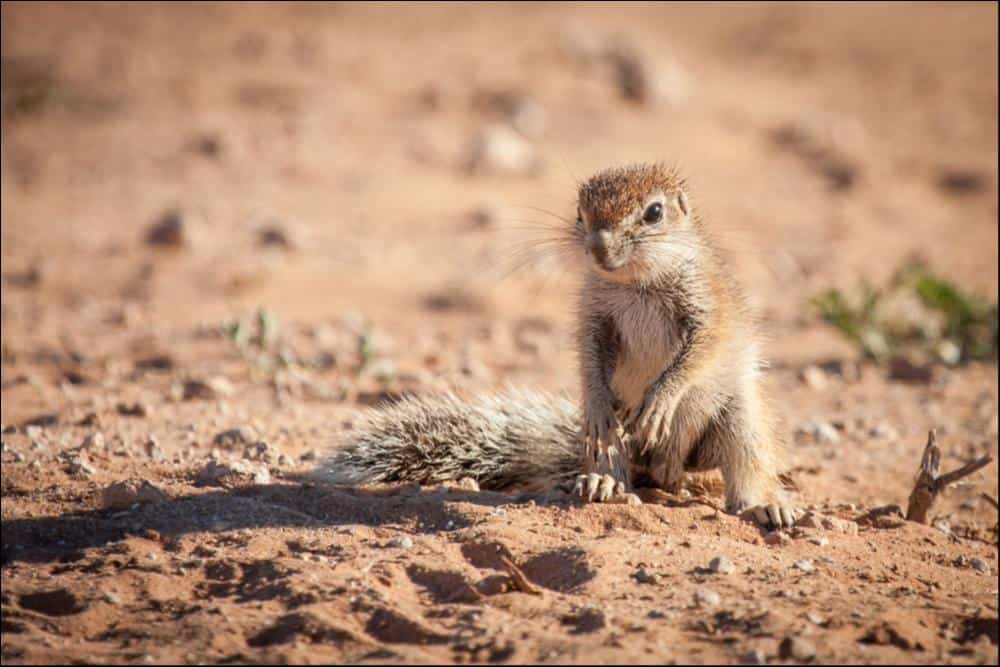
A cute and adorable baby Cape Ground squirrel born after a 48-day gestation period.
©Stephan Olivier/Shutterstock.com
There is no known breeding period in the case of Xerus. However, the male and female Xerus mate throughout the year despite having only single mating partners. It is said that they sometimes give birth through July and October. The gestation period in Xerus is about 48 days after which the young ones are weaned for about 52 days.
Female Xerus reach sexual maturity at 10 months of age while the sexual maturity in males usually happens when they are eight months old. The female Xerus can breed all year long, but very few of them produce more than one little annually. Usually, females produce about one to three babies per litter.
The babies that are called pups are born hairless, with their eyes closed. They are known to open their eyes around 35 days of age and are looked after by their mothers for about 45 days. The pups are known to reach adulthood at about 150 to 153 days.
In captivity, a Xerus can survive several years, but there are no known records of its lifespan in the wild.
View all 13 animals that start with XXerus FAQs (Frequently Asked Questions)
What kind of an animal is a Xerus?
A Xerus is a mammal that sometimes goes by the name African ground squirrel. It lives in sub-Saharan Africa in grasslands, savannas, and deserts. It is omnivorous, diurnal and gives birth to one to three live pups.
What does a Xerus eat - are they carnivores, herbivores, or omnivores?
A Xerus usually eat seeds, nuts, and roots. However, they sometimes also feed on eggs and other small animals.
What eats a Xerus?
The predators of a Xerus include snakes, lizards, and jackals.
Are Xerus endangered?
No, Xerus are not endangered. In fact, they are sometimes called pests because of their habit of eating farmer’s crops. They are categorized as least concern by the IUCN Red List of Threatened Species and have a stable population.
How do you pronounce Xerus?
It can be pronounced as “zuhr”+ “uhs.”
Where do Xerus live?
These squirrels are native to Africa but can also be found in Namibia, Lesotho, and Botswana. They usually prefer living in open areas especially woodlands or grasslands.
Are Xerus carnivores, herbivores, or omnivores?
Xerus is mostly herbivore in nature and usually eat seeds, nuts, and roots. However, they sometimes also feed on eggs and other small animals.
What Kingdom do Xerus belong to?
Xerus belong to the Kingdom Animalia.
What is a baby Xerus called?
A baby Xerus is called a pup.
Thank you for reading! Have some feedback for us? Contact the AZ Animals editorial team.

